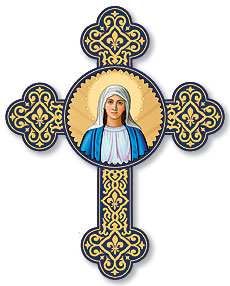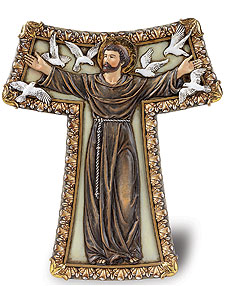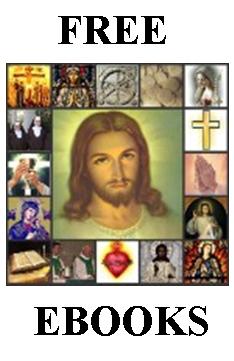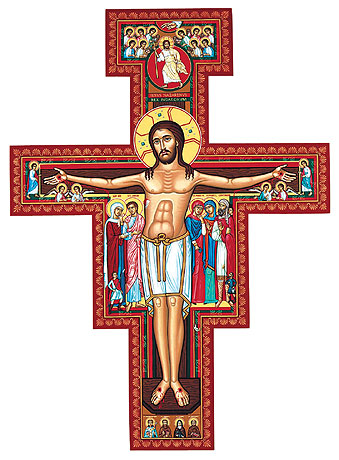
Our Lady's Promise
is a Lay Franciscan Apostolate dedicated
to the Mission that Evangelization,
the Holy Rosary
and the Scapular
are Essential Parts of
Daily Catholic Life Pax et bonum!


Living and
Sharing the Gospel Life through the Gifts of Faith that Our Lady has Provided
Us...
Who We Are
Our Lady’s Promise is the personal Apostolate of a Third Degree Knight of Columbus from Pittsburgh, Pennsylvania who is both a Roman and Byzantine Catholic working towards permanent Profession in the Secular Franciscan Order.
The works and mission of this Apostolate center on the concept that the world is in urgent need of discovering Jesus Christ and in being one with His Church. It is within Christ’s Catholic Church (the pillar and foundation of truth) that YOU can come to the fullness of a personal relationship with Jesus Christ.
YOU, as a visitor to this
site, can be a powerful instrument in communicating this life transforming
message through Our Lady’s gifts of the Scapular and the Holy Rosary.
Our Mission
Our Lady’s Promise Apostolate strives to fulfill the following fourfold
mission:
1. To encourage all Catholic’s to make Our Lady’s promise of the Holy Rosary and Scapular an essential part of their daily lives;
2.
To evangelize
the Catholic faith in the traditions of Saint Francis and Saint Clare;
3. To proclaim the importance of “Living the Gospel Life” through the medium of the Internet; and,
4. To introduce Western Roman/Latin Catholicism to the Treasures of Eastern Byzantine/ Catholicism.
Our Pledge
Our Apostolate has pledged our uncompromising loyalty and fidelity to the
Catholic Church and to its only authentic teaching authority - the successor of Peter, the Vicar of Christ, the
Pope, and to those Bishops who are loyal and in union with him.
Our Prayer
We pray, that through the guidance and inspiration of Our Lady, the Holy Spirit,
Saint Francis and Saint Clare, that all Catholics learn more about their faith
and in turn use that knowledge to make Evangelization, the Scapular and the
Holy Rosary a natural and active part of their life.
"Perform the work of an evangelist" - 2 Tim 4:5
and
"Preach the Gospel always- and, if necessary, use words ." - St. Francis of Assisi

The introduction of Western Roman/Latin Catholicism to the
Treasures of Eastern Byzantine/Orthodox Catholicism
What are the Eastern Catholic Churches?
Although it is not widely known in our Western world, the Catholic Church is actually a communion of Churches. According to the Constitution on the Church of the Second Vatican Council, Lumen Gentium, the Catholic Church is understood to be "a corporate body of Churches," united with the Pope of Rome, who serves as the guardian of unity (LG, no. 23). At present there are 22 Churches that comprise the Catholic Church. The new Code of Canon Law, promulgated by Pope John Paul II, uses the phrase "autonomous ritual Churches" to describe these various Churches (canon 112). Each Church has its own hierarchy, spirituality, and theological perspective.
Because of the particularities of history, there is only one Western Catholic Church, while there are 21 Eastern Catholic Churches. The Western Church, known officially as the Latin Church, is the largest of the Catholic Churches. It is immediately subject to the Roman Pontiff as Patriarch of the West. The Eastern Catholic Churches are each led by a Patriarch, Major Archbishop, or Metropolitan, who governs their Church together with a synod of bishops. Through the Congregation for Oriental Churches, the Roman Pontiff works to assure the health and well-being of the Eastern Catholic Churches.
While this diversity within the one Catholic Church can appear confusing at first, it in no way compromises the Church's unity. In a certain sense, it is a reflection of the mystery of the Trinity. Just as God is three Persons, yet one God, so the Church is 22 Churches, yet one Church. The Catechism of the Catholic Church summarizes this nicely:
"From the beginning, this one Church has been marked by a great diversity which comes from both the variety of God's gifts and the diversity of those who receive them... Holding a rightful place in the communion of the Church there are also particular Churches that retain their own traditions. The great richness of such diversity is not opposed to the Church's unity" (CCC no. 814).
Although there are 22 Churches, there are only eight "Rites" that are used among them. A Rite is a "liturgical, theological, spiritual and disciplinary patrimony," (Code of Canons of the Eastern Churches, canon 28). "Rite" best refers to the liturgical and disciplinary traditions used in celebrating the sacraments. Many Eastern Catholic Churches use the same Rite, although they are distinct autonomous Churches. For example, the Ukrainian Catholic Church and the Melkite Catholic Church are distinct Churches with their own hierarchies. Yet they both use the Byzantine Rite.
Are the Eastern Catholic Churches the same thing as Greek Orthodox Churches?
No, they are not the same thing. The Greek Orthodox Church, and the other Eastern Orthodox Churches, are not in communion with the Pope of Rome. In contrast, the Eastern Catholic Churches are in full communion with the Pope of Rome.
This having been said, it is important to note that the Eastern Catholic Churches have a great deal in common with the Eastern Orthodox Churches, and are virtually indistinguishable. In most respects there are no differences between them. This is because the Eastern Catholic and Eastern Orthodox Churches share a common heritage, which colors all aspects of Church life. The average visitor cannot tell the difference between a Byzantine Catholic parish and a Greek Orthodox parish, for instance. This is because we share so much in common, and have almost identical liturgical, spiritual, and theological perspectives.
How many Eastern Catholic Churches are there, and how many rites are used?
Eight Rites of the Catholic Church:
- Roman
- Armenian
- Byzantine
- Coptic
- Maronite
- East Syrian
- West Syrian
- Ethiopian (often listed as a recension of the Coptic Rite)
The twenty-two Catholic Churches:
- * ROMAN RITE * used in the Latin Church
- * ARMENIAN RITE* used in the Armenian Church
- * BYZANTINE RITE * used in the Italo-Albanian Church, Melkite Church, Ukrainian Church 6. Ruthenian Church, Romanian Church, Greek Church (in Greece), Greek Church of Former Yugoslavia, Bulgarian Church, Slovak Church, Hungarian Church, Russian Church, Belarusan Church, and the Albanian Church
- * COPTIC RITE * used in the Coptic Church (in many lists the Ethiopian Church is also placed here)
- * MARONITE RITE * used in the Maronite Church
- * EAST SYRIAN RITE * used in the Chaldean Church and Syro-Malabar Church
- * WEST SYRIAN RITE * used in the Syro-Malankara Church and Syrian Church
- * ETHIOPIAN RITE * used in the Ethiopian Church (often listed under the Coptic Rite)
Is Pope the head of the 21 Eastern Catholic Churches in addition to being head of the Roman Catholic Church?
The Pope, in his role as head of the Universal Church, is in an indirect way head of the individual Eastern Catholic Churches. But each of the Eastern Catholic Churches have their own specific heads, either a Patriarch or Metropolitan.
Pope John Paul II explains it as such:
"In harmony with the tradition handed down from the earliest centuries, the Patriarchal Churches have a unique place in the Catholic communion. One need only think that in these Churches the highest authority for any action, including the right to elect Bishops within the borders of the patriarchal territory, is constituted by the Patriarchs with their Synods, without prejudice to the inalienable right of the Roman Pontiff to intervene." (WE EXTEND OUR ARMS IN BROTHERHOOD, no. 5)
In a very direct way, the Pope is head of the universal Catholic Church, which is comprised of the Eastern Catholic Churches together with the Latin Church.
How did the Eastern Churches start and was the Roman Catholic Church started first by Jesus Christ?
In the early centuries every community of believers gathered around a bishop was considered a Church. We see this in Paul's epistles to the various Churches. For example, St. Paul begins I Corinthians with "To the church of God which is at Corinth..." (I Cor. 1:2).
Eventually these local Churches found themselves uniting around certain prominent centers. Naturally large cities and sees established by Apostles had a certain prominence, and the bishops of these cities took on a leadership role. Thus, these groupings of local Churches also became known as Churches. As Christianity continued to spread and evolve, different customs and even theological perspectives arose. In time these groupings could accurately be called distinct ritual Churches (in today's language).
All of these Churches can trace their founding to Jesus Christ and his commission to the Twelve to go out and make disciples of all nations.
Are Eastern churches still pretty much divided along ethnic lines? Why don't they evangelize like Roman Catholics to other ethnic groups?
Most unfortunately, many Eastern Catholic Churches are still divided along ethnic lines. This results in a lack of evangelization, and the stagnation of parishes. This is changing, thankfully. My own Church, the Byzantine-Ruthenian Catholic Church, has been making a serious effort to reach people from all backgrounds. We now have members from all ethnic and racial backrounds. We have some parishes with large numbers of blacks and hispanics. We even have some African-American nuns. In the fall we are beginning a new evangelization commission, and I expect this to bear much fruit. Please keep us in your prayers.

